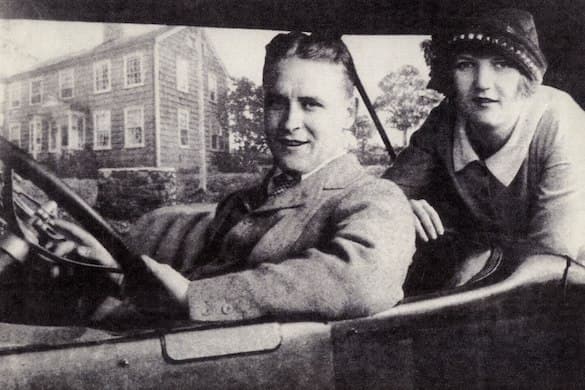Fragmenting the Cracked Up F. Scott Fitzgerald
What biographer, in his or her right mind, would structure a biography so that each chapter covers just two years, as is the case with ‘F. Scott Fitzgerald: A Composite Biography’?

‘F. Scott Fitzgerald: A Composite Biography’
Edited by Niklas Salmost and David Rennie
University of Minnesota Press, 448 Pages
The best-selling writer of the Jazz Age, F. Scott Fitzgerald, author of a masterpiece depicting the fraught American dream of fame and success, “The Great Gatsby” (1925), followed by his French Riviera novel about a crackup that received a mixed reception, “Tender is the Night” (1934), died in 1940, leaving behind an incomplete novel about Hollywood, “The Love of the Last Tycoon.”
“F. Scott Fitzgerald: A Composite Biography” begins with an epigraph from “The Crackup” (1945), his series of essays about the pressures of fame and his declining popularity, first published in Esquire in 1936: “There never was a good biography of a novelist. There couldn’t be. He is too many people if he’s any good.” Fitzgerald did not understand that biography is a cumulative enterprise: Subsequent biographies correct and amplify their predecessors, as new sources are discovered and new interpretations develop.
So Fitzgerald’s comment about biographies of novelists is a misguided place to begin a composite biography of him. The introduction claims to solve a problem that does not exist: “Rather than a new solo-author account falling into the pitfalls of the pathography Donaldson deplored (‘warts and all’ accounts ‘attributing the worst possible motives’ to the subject’s ‘behavior’) or the equally rebarbative ‘sash-weight heft’ tome ‘of insignificant detail,’ perhaps what is needed is a multiauthor approach, which by its inherent plurality of perspectives would avoid a myopic, reductive biographical treatment—a task no less impossible, perhaps, but one replete with new possibilities.”
As suggested by the title of one my biographies, “The Lives of Norman Mailer,” I am quite aware — as are many other biographers — that my subject should be regarded as more than one person. To make that point about polyvalent novelists, you don’t need scholars carving out two-year periods in Fitzgerald’s life, which is what this book does. The result is a mechanical slicing up of a life.
What biographer, in his or her right mind, would structure a biography so that each chapter covers just two years? One chapter, if the biography is any good, may cover two, four, or 20 years and more of a subject’s life, or even, I can imagine, one day in a subject’s life. It all depends on what purpose the biographer has in mind. There can be no coherent purpose when each chapter is written by someone else and measured out to approximately the same length of time and wordage.
What results is repetition, as we learn about incidents and people in Fitzgerald’s life again and again — sometimes with added value, sometimes not. What is missing is a biographer’s sense of a life’s shape. From the first sentence, if the biographer is any good, she or he is thinking about the shape of the whole book, the whole life, not just two years. Some of this book’s contributors evade the two-year confinement of their efforts by flashing forward or backward in Fitzgerald’s life. But how their efforts are linked together is never established.
Of course you will learn a good deal from this composite biography, as these Fitzgerald scholars often cite other biographies and the most recent discoveries and insights. Used as a reference tool, this book has considerable merit.
The introduction is also quite valuable for its survey of the dozens of biographies and biographical works on Fitzgerald, though the work of biographers like Jeffrey Meyers are censured because his effort to be analytical, to “illuminate recurrent patterns,” leads to harping on Fitzgerald’s “alcoholism, sexual insecurity, and cynically exploited marital volatility.”
Well, you still get all that, I have to say, in this book — but in two-year increments, if that will help to calm you.
The editors, not having seriously grappled with the nature of biography, state the obvious: “our volume suggests that biography offers a partial, not a definitive, assessment of Fitzgerald’s life.” What else could it be? A few composite biographies of D.H. Lawrence and Raymond Carver are mentioned, which are not chronological but essentially reminiscences, leading the editors to declare that theirs is “the first scholarly composite biography, as far as we are aware.” There may be a reason for that.
Mr. Rollyson is the author of “Confessions of a Serial Biographer” and “A Higher Form of Cannibalism? Adventures in the Art and Politics of Biography.”

